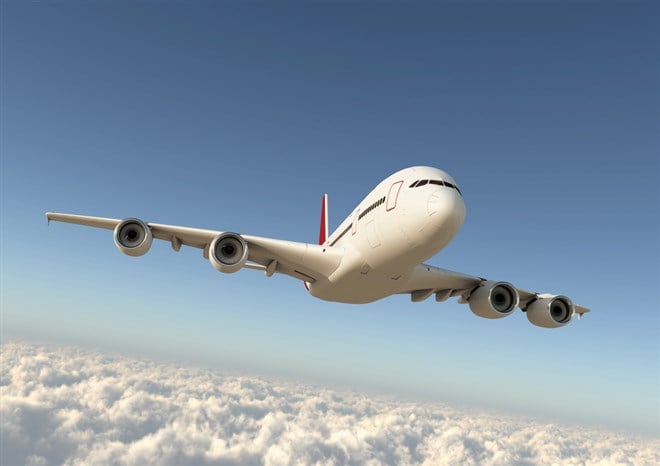
- Southwest’s revenues are getting better thanks to pent-up travel demand
- American Airlines regional subsidiaries announced a 50% pay hike for pilots
- Delta Air Lines, Inc. returned to profitability in the June quarter
There are many airline shareholders that can sympathize. Lately, the growth and dividend handouts have been tough to come by.
A myriad of challenges has a once hot reopening play going nowhere fast—and a potential lasting recession threatening to send industry stock prices to pre-Covid levels.
In a (pea)nut shell, the good news is that leisure and business travel demand is back with a vengeance. The bad news is that fuel prices, wages, and debt loads are also up significantly.
Just when things were looking up for embattled airline stocks, they now face another uphill climb to regain market favor. Here’s how some of the most widely followed companies are handling the latest turbulence.
What Issues is Southwest Airlines Facing?
When your business model is built on low costs and low fares as is the case with Southwest Airlines Co. (NYSE: LUV), an inflationary backdrop isn’t ideal.
On the bright side, Southwest’s revenues are getting better thanks to pent-up travel demand and, lately, bargain hunting for cheaper flights. The $6.7 billion it recorded in Q2 exceeded pre-Covid levels by about 10%.
Although it also beat Street estimates, the market reacted negatively to (among other things) a 5% increase in cost per available seat mile (CASM)—and that excluded fuel expenses, which nearly doubled year-over-year to $3.36 per gallon. The ongoing war in Ukraine could keep fuel prices elevated for the foreseeable future, a headwind Southwest and its peers can do little about.
Southwest is also dealing with pilot shortages, which is forcing it to spend more on recruitment and training efforts. In the wake of this summer’s pilot protests, Southwest is scrambling to mend ties with employees over pay and working conditions.
Earlier this month it reached a tentative agreement with an aircraft technicians union, the terms of which haven’t been disclosed. Continued progress with labor negotiations are a must to prevent further flight cancellations and alienating a loyal customer base.
Over time, Southwest should benefit from the uptrend in demand along with the things that have historically made it a go-to for many travelers—simple fares and superior customer service. Until there are signs that the cost structure is improving, however, even the best of fare structures will matter little.
What is American Airlines' Biggest Concern?
American Airlines Group Inc. (NASDAQ: AAL) is also no stranger to higher expenses, which have been the main reason the stock went sideways throughout the summer. It too is grappling with increased fuel prices and pilot salaries that overshadowed a 79% surge in revenue last quarter. Management projected that full-year CASM will be up 10% to 12% with higher labor costs playing a big part.
Just as fuel prices are out of American’s control, so too is the recent wave of pilot retirements that took hold during the pandemic. Like fast-food operators and others who are facing labor shortages, the airliner has had a limited supply of replacements to turn to.
Meanwhile, it has been forced to increase the wages of existing pilots so as to not make labor shortage matters worse. In June, a pair of American Airlines regional subsidiaries announced a 50% pay hike for pilots through August 2024. With Piedmont Airlines and Envoy Air pilots now the highest paid among regional airlines, recruitment pressures should ease—but will others demand similar raises?
An additional concern with American is that it has a heavier debt burden than most U.S. airliners. Debt accounts for 120% of the company’s capital structure, roughly 1.5x the industry average. Already challenged by elevated costs, management’s ability to reduce debt is limited—especially in a rising rate environment where refinancing options aren’t great. Even with passenger traffic on the upswing, leverage is likely to be an overhang on the stock for some time.
Has Delta Air Lines Stock Bottomed?
Delta Air Lines, Inc. (NYSE: DAL) returned to profitability in the June quarter but the rewards have yet to flow through to shareholders. The stock is trying to claw its way back from June 2022, its worst monthly drop since the Covid-onset. The Q2 report helped spark a mini-rally but Delta is far from out of the woods.
Unfortunately for Delta bulls, the sharp turnaround to positive earnings came with a gloomier outlook that has limited the stock’s upside. Amid lowered capacity and labor shortages, management struck a more cautious tone than in previous quarters.
Demand growth is expected to be minimal in the third quarter, which could put the near-term excitement around profits on hold for longer. With industry capacity constrained and ticket prices trending higher, travelers may be suspending travel plans as economic uncertainty looms. That’s not a good omen heading into the all-important holiday travel season. With gasoline prices more tolerable, will more Americans opt for road trips and staycations?
In addition to the widespread caution among airline executives, Wall Street’s less than bullish sentiment around airline stocks has kept the group grounded for much of 2022.
Will they take flight again in 2023? Let’s just say a lot will need to go right.













